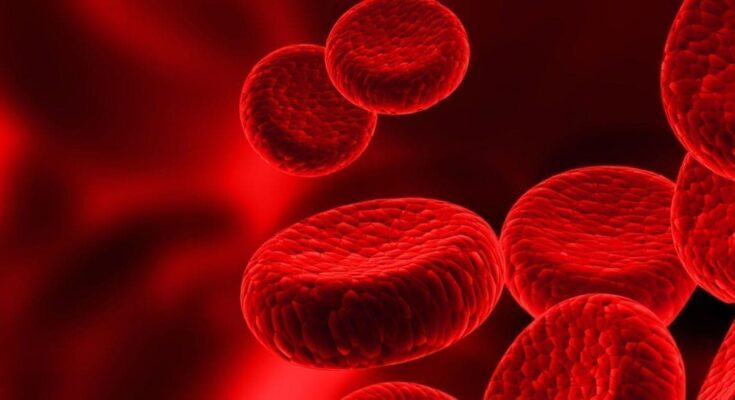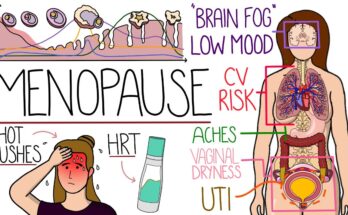Progeria Symptoms: Progeria, also known as Hutchinson-Gilford Progeria Syndrome (HGPS), is a rare and severe genetic disorder characterized by accelerated aging in children.
Despite its rarity, affecting approximately one in four million newborns worldwide, progeria commands significant medical and scientific attention due to the insights it provides into the aging process.
This article provides a comprehensive exploration of the symptoms and causes of progeria, highlighting critical developments in genetic research and the implications for treatment.
What is Progeria?
Progeria, also known as Hutchinson-Gilford Progeria Syndrome (HGPS), is a rare and severe genetic condition that causes accelerated aging in children. This disorder is characterized by symptoms typically associated with old age manifesting at a very young age. Children with Progeria often appear normal at birth but begin to display signs of rapid aging within their first two years. Symptoms include growth delays, loss of body fat and hair, aged-looking skin, stiffness of joints, and cardiovascular issues.
Epidemiology: How Common is Progeria?
Progeria is extremely rare, with an estimated incidence of about 1 in 4 million newborns worldwide. This translates to roughly 400 children living with Progeria at any given time across the globe. The condition affects children of all races and both sexes equally. Due to its rarity, Progeria often requires specialized medical attention and ongoing research to better understand and manage the condition effectively.
Early Signs and Symptoms of Progeria
Identifying early signs and symptoms is crucial for timely diagnosis and management. This section outlines the initial indicators of Progeria and compares these symptoms with normal aging processes in children to provide clear distinctions.
Initial Indicators of Progeria
The early signs of Progeria typically manifest within the first year of a child’s life. These indicators include:
- Growth Delay: Infants with Progeria often experience a slowdown in growth and do not gain weight at the expected rate, despite having a normal appetite.
- Distinctive Facial Features: Children may have a distinctive facial appearance including a smaller face, a pinched nose, thin lips, and protruding ears.
- Hair Loss: One of the most noticeable signs is the loss of hair, including eyelashes and eyebrows.
- Skin Changes: The skin often appears wrinkled and aged with visible veins; it might also feel thicker or stiffer.
- Skeletal Abnormalities: There can be noticeable bone abnormalities such as a narrow, shrunken or wrinkled face, and small jaw, leading to dental issues.
Comparison with Normal Aging in Children
When comparing the symptoms of Progeria with typical aging in children, several key differences emerge:
- Physical Growth: Normal aging in children involves continuous growth and weight gain. In contrast, children with Progeria show significant growth delays and fail to thrive in terms of height and weight.
- Facial Characteristics: While all children may experience changes in facial features as they grow, those with Progeria have distinct facial features that do not correspond with their chronological age.
- Hair and Skin: Normal aging in children does not involve severe hair loss or skin aging. In contrast, children with Progeria experience premature hair loss and skin changes that resemble elderly skin.
- Bone Development: Typically, children develop stronger and denser bones as they age. However, in Progeria, bone development is impaired, often leading to a fragile skeletal structure susceptible to fractures.
However, understanding these early signs and the stark differences between Progeria symptoms and normal aging can aid in early detection and improve management outcomes for affected children.
Comprehensive List of Progeria Symptoms
Below, we provide a detailed list of the symptoms associated with progeria, categorized into physical symptoms, internal health challenges, and cognitive and emotional aspects.
Physical Symptoms
- Growth Delay: Children with progeria often have a low birth weight and experience slow growth throughout their lives.
- Alopecia (Hair Loss): One of the most noticeable signs is the loss of hair, including eyelashes and eyebrows.
- Aged-Looking Skin: The skin appears thin, wrinkled, and fragile, resembling that of elderly individuals.
- Short Stature: Individuals with progeria typically have a shorter height due to delayed growth.
- Distinctive Facial Features: These include a smaller face, a pinched nose, and a small jaw.
- Musculoskeletal Degeneration: This includes joint stiffness, hip dislocations, and generalized osteoporosis, leading to fractures.
Internal Health Challenges
- Cardiovascular Disease: Heart disease is common and can manifest as early as in adolescence, including conditions like arteriosclerosis, which can lead to heart attacks and strokes at a young age.
- Respiratory Issues: Lung function can be compromised, making respiratory infections more frequent and severe.
- Metabolic Anomalies: Issues such as insulin resistance and a higher risk of developing diabetes are prevalent.
- Dental Problems: Due to abnormal jaw development and crowding of teeth, dental issues are common.
- Limited Fat Stores: Children with progeria have very low amounts of body fat, which affects energy storage and insulation.
Cognitive and Emotional Aspects
- Cognitive Development: Generally, cognitive development is not affected; children with progeria have normal intelligence and cognitive skills.
- Emotional Resilience and Challenges: While many children display remarkable resilience, the physical differences and health challenges can lead to emotional and social issues, including isolation or bullying.
- Adaptability: Many affected children develop a mature understanding and adaptability to their condition, often showing wisdom beyond their years.
However, early diagnosis and a multidisciplinary approach to care are crucial in addressing the physical, internal, and emotional challenges posed by this condition.
Causes and Risk Factors of Progeria
Understanding the causes and risk factors is crucial for early diagnosis and management of the disease. Here’s an in-depth look at the causes, risk factors, and recent insights from genetic research related to Progeria.
Causes of Progeria
Progeria is primarily caused by a mutation in the LMNA gene. This gene normally produces the lamin A protein, which is essential for stabilizing the inner membrane of the cell’s nucleus. The mutation leads to the production of an abnormal form of lamin A protein known as progerin, which disrupts the normal function and structure of the nucleus. As a result, cells deteriorate more rapidly, leading to the symptoms associated with premature aging.
Risk Factors of Progeria
Progeria affects children in equal measure across all genders and ethnicities. The following are key points regarding its risk factors:
- Genetic Mutation: The mutation responsible for Progeria occurs in the sperm or egg before conception and is usually a chance event. This mutation is rarely inherited and typically happens in people with no family history of the disease.
- Random Occurrence: There are no known environmental, lifestyle, or demographic factors that increase the risk of Progeria. Every case documented so far has appeared to be sporadic, with the genetic change being a new mutation in nearly all instances.
Insights from Recent Research on Genetic Causes
Recent genetic research has provided deeper insights into the causes of Progeria, highlighting the potential for future therapeutic developments:
- Genetic Diversity: Studies have identified that slight variations in the LMNA gene mutation can influence the severity and specific symptoms of Progeria, suggesting that genetics could play a role in tailoring individualized treatments.
- Therapeutic Targets: Research has also focused on finding ways to reduce the production of progerin or to minimize its harmful effects. Drugs that can aid in the repair of the damaged nuclear membrane or enhance the degradation of progerin are under investigation.
- Broader Implications: Understanding the mechanisms of Progeria can also offer insights into the natural aging process and age-related diseases affecting the broader population.
However, continued research and a deeper understanding of the genetic factors of Progeria not only promise better management for those suffering from the syndrome but also offer broader implications for aging and cellular biology.
Diagnosis of Progeria
Diagnosing this condition involves a combination of clinical observation and genetic testing.
How Progeria is Diagnosed
- Clinical Evaluation: The diagnosis process typically begins with the observation of distinct physical symptoms that are indicative of Progeria. These symptoms include growth failure during the first year of life, a distinctive facial appearance (small jaw, thin lips, and a pinched nose), and hair loss including eyelashes and eyebrows.
- Genetic Testing: Confirmatory diagnosis is achieved through genetic testing to detect mutations in the LMNA gene, which is responsible for the production of lamin A, a protein that supports the cell nucleus. A specific mutation in this gene leads to the production of an abnormal protein called progerin, which is central to the development of Progeria.
- Specialized Tests: Additional tests may be conducted to assess cardiovascular health, as children with Progeria are prone to heart diseases. These tests include echocardiograms, Electrocardiogram (ECG), and MRI scans.
Role of Genetic Counseling in Progeria Diagnosis
Genetic counseling plays a crucial role in the diagnosis and management of Progeria. Here’s how:
- Interpreting Genetic Tests: Genetic counselors help in interpreting the results of genetic testing, ensuring that the diagnosis of Progeria is clear and accurate. They explain the nature of the genetic changes observed and what this means for the affected child’s health.
- Support for Families: Genetic counselors provide essential support to families by helping them understand the condition, what to expect, and how to care for a child diagnosed with Progeria. They also discuss the risk of Progeria affecting future pregnancies, providing guidance on reproductive options if needed.
- Resource Connection: They connect families with resources, support groups, and specialists for managing Progeria, thereby improving the quality of life for those affected and their families.
However, the diagnosis of Progeria requires careful clinical and genetic analysis, supported by the insights and aid provided by genetic counseling.
Impact of Progeria on Life Expectancy
Progeria, a rare genetic condition, significantly impacts life expectancy and quality of life. This section explores the typical progression of the disease and its implications for those diagnosed.
Typical Progression of Progeria
Progeria, also known as Hutchinson-Gilford Progeria Syndrome, is characterized by rapid aging in children. Symptoms usually manifest within the first year of life, including growth delays, loss of body fat and hair, and distinctive facial features. As children with Progeria age, they experience conditions typically associated with old age, such as joint stiffness, cardiovascular issues, and atherosclerosis. Despite their young chronological age, children with Progeria often exhibit the physical and health characteristics of much older individuals.
Life Expectancy and Quality of Life
The life expectancy for children with Progeria is significantly reduced, with most living into their mid-teens to early twenties. The primary cause of death is usually heart disease, particularly heart attacks and strokes, which are uncommon in other children but frequent in those with Progeria due to accelerated cardiovascular aging.
Quality of life for individuals with Progeria can be deeply affected by their physical symptoms and medical complications. However, advancements in medical care and supportive therapies have improved the management of symptoms and complications. Interventions such as physical therapy, occupational therapy, and cardiovascular treatments can enhance daily functioning and overall well-being.
Research and clinical trials continue to explore treatments that can extend life expectancy and improve quality of life. Notably, recent therapies targeting the abnormal protein responsible for Progeria have shown promise in clinical trials, offering hope for better management of the disease.
Management and Treatment Options for Progeria
While there is currently no cure for progeria, advancements in research are paving the way for potential treatments and management strategies. Here, we explore the current treatments available, supportive therapies, lifestyle adjustments, and future directions in treatment for progeria.
Current Treatments Available
- Lonafarnib: This is a farnesyltransferase inhibitor that has been shown to improve cardiovascular health and increase lifespan in children with progeria. Lonafarnib addresses some of the molecular pathways that contribute to the disease’s progression.
- Growth Hormone Therapy: Although not a cure, growth hormone therapy can help manage some symptoms of progeria such as growth delay. This therapy is used to improve height and weight gain, enhancing the overall quality of life.
- Anti-inflammatory Medication: To manage systemic inflammation associated with progeria, doctors often prescribe anti-inflammatory medications. These can help reduce complications and improve comfort levels.
Supportive Therapies and Lifestyle Adjustments
- Physical Therapy: Regular physical therapy is crucial to maintain joint mobility and prevent stiffness. It also helps in managing pain and improving physical function.
- Occupational Therapy: This therapy helps children with progeria in performing daily activities with greater ease and independence, fostering a better quality of life.
- Nutritional Support: A balanced diet tailored to the individual needs of children with progeria is vital. Nutritional support focuses on maintaining adequate caloric intake and managing symptoms related to metabolic changes.
- Cardiovascular Health Monitoring: Regular monitoring by a cardiologist is essential to detect and manage heart-related complications early.
Future Directions in Treatment
- Gene Therapy: Research is ongoing to explore gene therapy as a potential treatment for progeria. This could involve repairing the mutation in the LMNA gene, which is responsible for most cases of the disease.
- Stem Cell Therapy: Scientists are investigating the use of stem cells to treat or manage progeria. This approach aims to renew or repair the damaged cells caused by the disease.
- Advanced Drug Trials: New drugs are continually being tested in clinical trials. These include drugs that target cellular aging processes more precisely, potentially reducing the severity of symptoms or slowing the progression of the disease.
However, families and caregivers play a crucial role in the daily management of progeria, and staying informed about new developments can provide hope and improved care for those affected by this rare condition.
FAQs about Progeria Symptoms
What is Progeria?
Progeria, also known as Hutchinson-Gilford Progeria Syndrome, is a rare genetic disorder characterized by accelerated aging in children. It results from a mutation in the LMNA gene, affecting the body’s ability to produce a stable nuclear envelope.
What are the first signs of Progeria?
The first signs of Progeria typically appear within the first year of life. These include growth failure, loss of body fat and hair, aged-looking skin, stiffness of joints, and distinctive facial features such as a pinched nose, small chin, and large eyes.
How is the skin affected by Progeria?
Children with Progeria often experience severe skin changes that resemble aged skin. Symptoms include thinning, wrinkling, and a loss of elasticity. The skin may also be more susceptible to bruising and tearing.
Can Progeria affect the heart?
Yes, cardiovascular complications are common in individuals with Progeria. The disorder can lead to atherosclerosis at a very young age, which increases the risk of heart attacks and strokes. Regular cardiovascular monitoring is essential for managing these risks.
Is there a cure for Progeria?
Currently, there is no cure for Progeria. Treatment focuses on managing symptoms and improving quality of life. Recent advances in research have led to the development of drugs that may extend lifespan and improve some symptoms, but these are not cures.
How can Progeria be diagnosed?
Progeria is diagnosed through a combination of clinical observation of symptoms and genetic testing to confirm the presence of the LMNA gene mutation. Early diagnosis is crucial for managing the disease effectively.
Conclusion
Recognizing the symptoms of Progeria early is crucial for the effective management and care of this rare condition. Early diagnosis can significantly enhance the quality of life for those affected and provide families with the necessary resources and support.
We encourage ongoing research into Progeria to uncover more effective treatments and ultimately, a cure. Supporting affected families and contributing to research initiatives can make a profound difference in the lives of these children.
Let’s stand together in fostering a supportive community and advancing medical research to bring hope and positive change to those impacted by Progeria.
References
For those seeking to delve deeper into the symptoms of Progeria and to validate the information provided here, the following reputable sources offer extensive insights and up-to-date research findings:
- Progeria Research Foundation – This organization provides comprehensive details on the symptoms, causes, and ongoing research efforts related to Progeria. Access their resources at Progeria Research Foundation.
- National Organization for Rare Disorders (NORD) – NORD offers a detailed overview of Progeria, including symptom descriptions and treatment options. Visit their page on Progeria at NORD – Progeria.
- Mayo Clinic – The Mayo Clinic’s website includes a section on Progeria that covers symptoms, diagnosis, and management. Find this information at Mayo Clinic – Progeria.
- PubMed Central – For academic papers and clinical studies on Progeria, PubMed Central is a valuable resource. You can search for related articles at PubMed Central.
These resources will not only enhance your understanding of Progeria but also provide you with the most credible and detailed information available.



